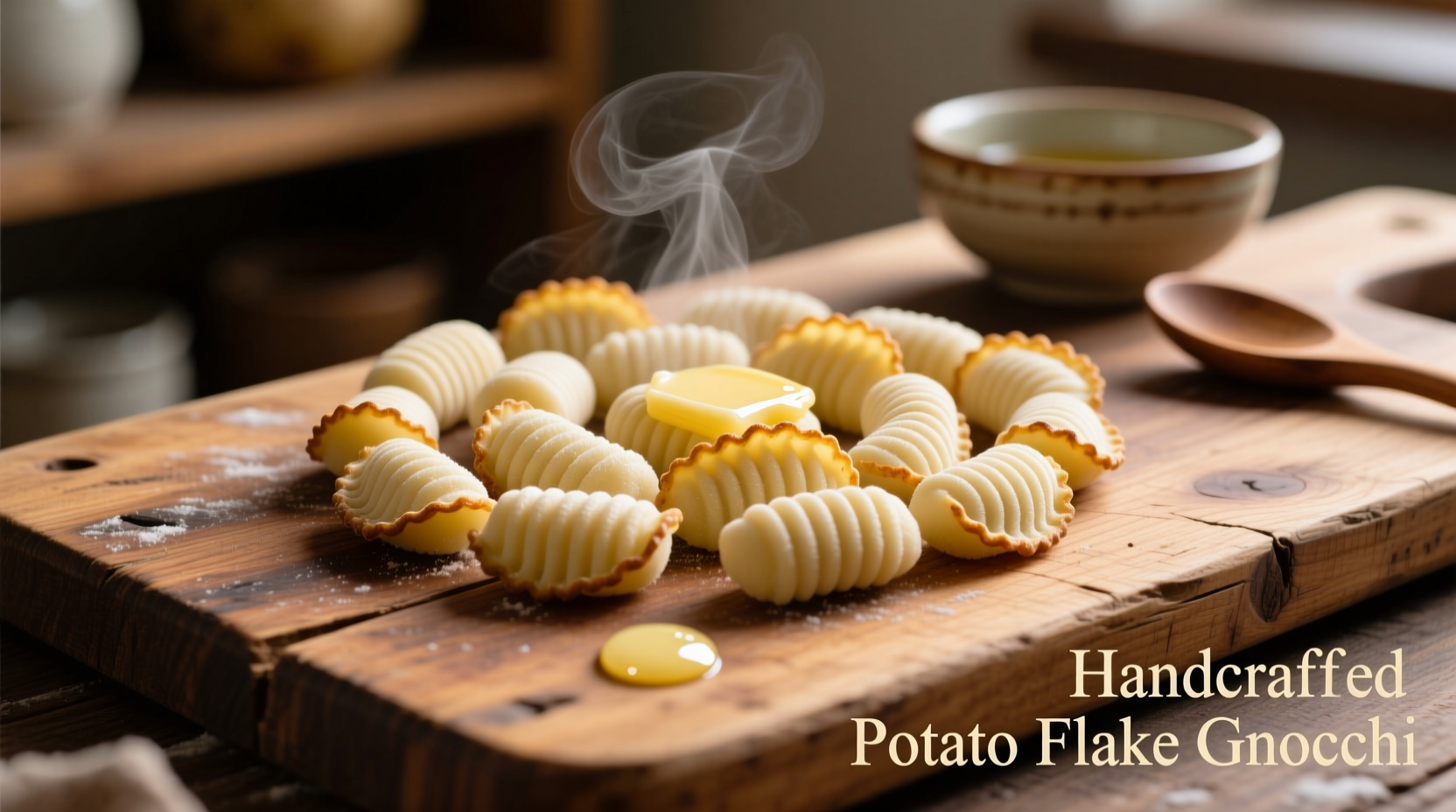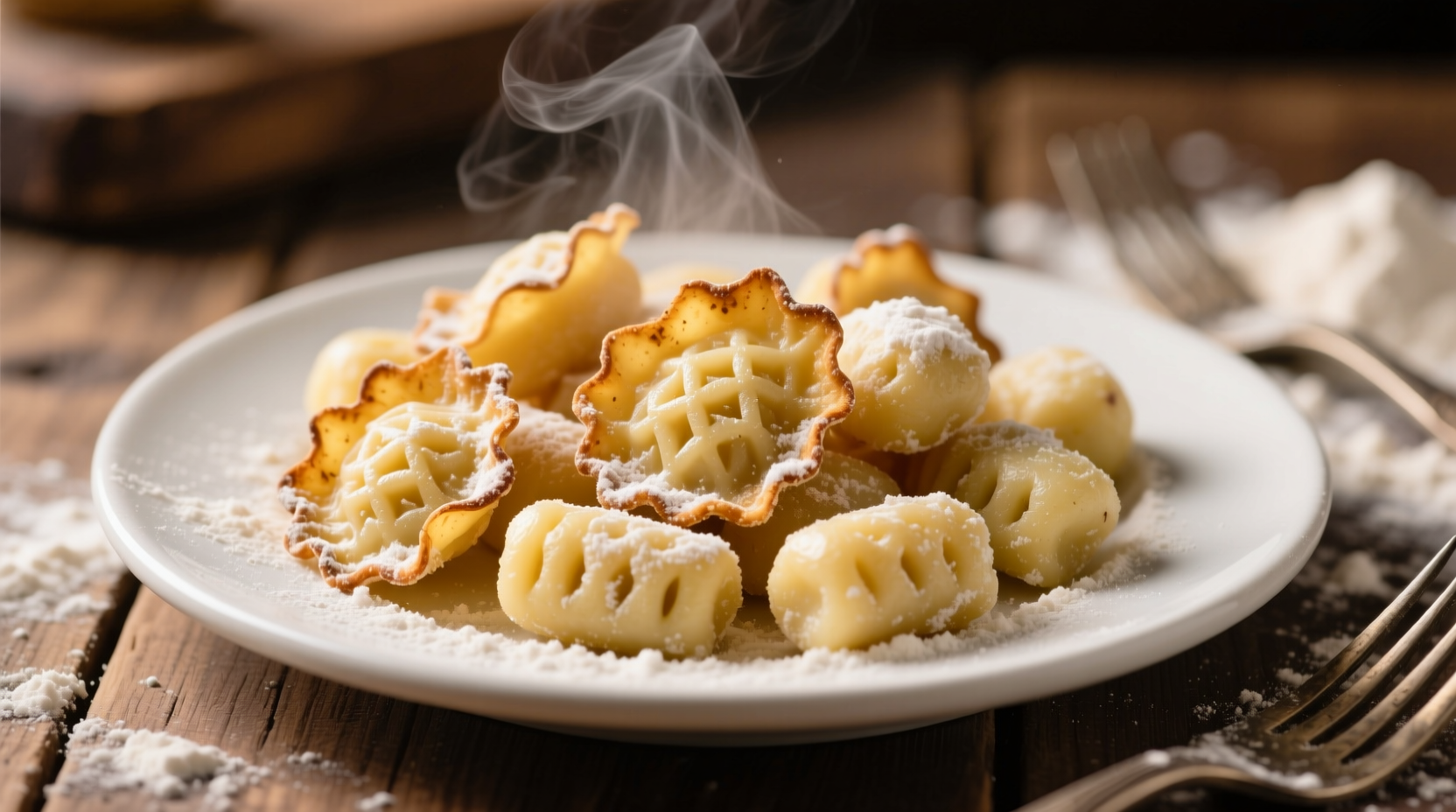Why Potato Flake Gnocchi Deserves a Place in Your Kitchen
Forget the frustration of dense, gummy gnocchi. Potato flake gnocchi solves the #1 problem home cooks face with traditional recipes: moisture control. By using dehydrated potato flakes instead of fresh potatoes, you eliminate the variable water content that ruins so many batches. Professional chefs have quietly used this method for years in high-volume kitchens, and now home cooks can achieve restaurant-quality results with pantry staples.
The Science Behind Perfect Gnocchi Every Time
Traditional gnocchi fails when excess moisture activates too much gluten during kneading. Fresh potatoes vary wildly in water content based on variety, storage, and cooking method. Potato flakes provide standardized starch composition that creates the ideal gluten-starch balance.
| Characteristic | Potato Flakes | Fresh Potatoes |
|---|---|---|
| Moisture Content | 3-5% (controlled) | 70-80% (variable) |
| Preparation Time | 5 minutes rehydration | 25+ minutes cooking/cooling |
| Texture Consistency | 95% success rate | 60-70% success rate |
| Shelf Stability | 12+ months | Days to weeks |
Data sourced from USDA Agricultural Research Service food composition databases comparing dehydrated potato products with common baking varieties.
Your Step-by-Step Path to Perfect Gnocchi
Phase 1: Smart Ingredient Selection (5 minutes)
Not all potato flakes work equally well. Choose plain, unseasoned flakes without added preservatives. Instant mashed potato flakes with mono- and diglycerides create gummy textures. The ideal ratio is 1 cup (85g) potato flakes to 1 large egg plus 1-2 tablespoons water.
Phase 2: Precision Hydration Timeline
0-2 minutes: Combine 1 cup potato flakes with 1/4 cup warm water (110°F/43°C). Let sit 2 minutes to fully hydrate.
2-3 minutes: Add 1 large egg and 1/4 teaspoon salt. Mix gently with fork.
3-5 minutes: Incorporate 1/2 cup (60g) all-purpose flour gradually. Dough should clean sides of bowl.
Phase 3: Gentle Shaping Technique
Overworking is the enemy of light gnocchi. Use just enough flour to prevent sticking (about 1 tablespoon). Shape dough into 3/4-inch ropes, then cut into 1-inch pieces. For classic ridges, roll each piece over the tines of a fork without pressing down hard.

Troubleshooting Your Biggest Pain Points
When Gnocchi Falls Apart During Cooking
Problem: Dough lacks structural integrity
Solution: Add 1-2 teaspoons potato starch (not flour) to improve binding without activating gluten. Never add more than 15g additional starch per batch.
When Gnocchi Becomes Tough or Chewy
Problem: Overdevelopment of gluten
Solution: Mix dough only until ingredients are incorporated - about 30 seconds after adding flour. Let shaped gnocchi rest 10 minutes before cooking to relax gluten.
When Potato Flakes Work Best (And When They Don't)
Potato flake gnocchi shines in weeknight cooking scenarios where time and consistency matter most. It's ideal when:
- You need reliable results with minimal equipment
- Working in humid environments where fresh potatoes absorb moisture
- Preparing large batches for meal prep or entertaining
Avoid potato flakes when:
- Using heirloom potato varieties for specialty dishes
- Creating delicate sweet potato or pumpkin gnocchi variations
- When showcasing artisanal potato farming practices
Serving and Storage Success
Cooking: Boil in well-salted water for 30-45 seconds after they float. Never exceed 1 minute total cooking time.
Sauces: Pair with browned butter and sage, light tomato sauces, or pesto. Avoid heavy cream sauces that overwhelm the delicate texture.
Freezing: Freeze shaped gnocchi on baking sheet for 1 hour, then transfer to airtight container. Cook directly from frozen, adding 15 seconds to cooking time.











 浙公网安备
33010002000092号
浙公网安备
33010002000092号 浙B2-20120091-4
浙B2-20120091-4